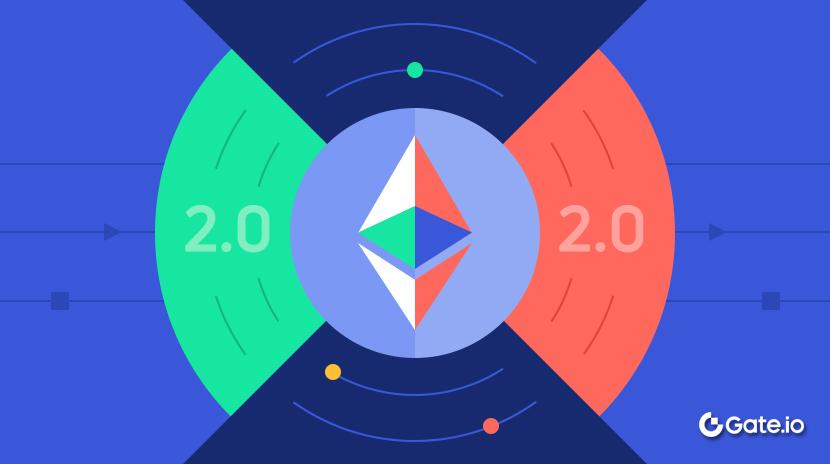The Real VC Opportunity in Prediction Markets
The prediction market gold rush is on. Every crypto native founder, fintech entrepreneur, and contrarian thinker is convinced they’ve found the secret sauce. They believe they have the one prediction market platform that will topple Polymarket and Kalshi. They’ve raised capital, hired teams, and launched flashy interfaces promising better UX, faster settlements, or niche markets that incumbents missed.
Most of them will fail.
This isn’t cynicism. It’s math. Network effects in prediction markets are brutally powerful. You need liquidity to attract traders, but you need traders to build liquidity. Polymarket has already won on scale in crypto native markets. Kalshi owns the regulatory high ground in US listed event markets. The cost to dethrone either player is astronomical. Marketing, regulatory navigation, and user acquisition all add up. Even if a new entrant achieves some success, they’re fragmenting an already thin market. This is a death sentence for platforms that live and die by their order book depth.
The graveyard of failed prediction market platforms already tells this story. How many people remember the half dozen markets launched post 2024 election cycle? Exactly.
But here’s what venture capitalists should actually be paying attention to. The real money in prediction markets isn’t in running the markets themselves. It’s in the infrastructure that powers them.
Why Infrastructure Is the Better Bet
Consider the history of financial markets. The fortunes in equities weren’t all made by stock exchanges, though some were. They were made by the data providers, the clearing houses, the trading infrastructure vendors, the market surveillance systems, and the analytics platforms that sat one layer deeper. Bloomberg didn’t make billions by competing with the NYSE. It made them by being indispensable infrastructure.
Prediction markets are following the same trajectory, just decades behind. Right now, the infrastructure layer is nascent. It’s fragmented. It’s inefficient. That’s where the real opportunity lives.
Here are the specific areas where venture capital should be focused.
Data and Oracle Infrastructure
Prediction markets require ground truth. They need authoritative data feeds about which candidate won, what the actual GDP number was, or whether a company achieved its targets. This is surprisingly complex. Different markets need different data sources. Varying levels of verification and settlement mechanisms are required to protect against manipulation. Companies building oracle networks specifically for prediction markets are essential. These firms aggregate data, provide cryptographic proofs, and settle disputes. As markets proliferate, a fragmented oracle landscape becomes untenable. The winner here will be the infrastructure that every platform, even competitors, can’t help but use.
Cross Market Infrastructure and Aggregation
Liquidity today is scattered. A smart trader might want to arbitrage across Polymarket, Kalshi, and three other platforms. Right now there’s no seamless way to do it. Building infrastructure that allows traders to see order books across all markets would be valuable. Traders could execute hedges simultaneously and manage risk across venues. This could unlock massive value. This is the “Bloomberg Terminal for prediction markets” opportunity. Every participant wins. Better cross market efficiency means tighter spreads and deeper liquidity everywhere.
Analytics and Historical Data
Once prediction markets mature, researchers, quants, and institutions will want to analyze historical predictions. They’ll identify patterns and understand how markets priced events over time. Someone will build the definitive repository of prediction market data. It will be cleaned, standardized, and queryable. This becomes the reference dataset for academic research, institutional analysis, and model building. This is a high margin, defensible business.
Processing and Settlement
As prediction markets scale and become more sophisticated, the backend needs to keep up. Better settlement mechanisms, faster data processing, and more efficient market infrastructure are all needed. Companies that build middleware are valuable. They connect markets to clearing systems, automate settlement, and reduce operational risk. Think of it as the plumbing that makes modern markets function.
Compliance and Risk Infrastructure
Prediction markets are heading toward more mainstream adoption and regulatory clarity. But that creates complexity. Infrastructure for managing regulatory reporting is essential. KYC/AML at scale is required. Detecting market manipulation and ensuring compliance across jurisdictions is critical. This is boring infrastructure. It’s also defensible and sticky. Once embedded, it’s hard to replace.
The Trader Side Infrastructure Play
But there’s another critical layer. It’s the infrastructure that sophisticated traders will demand to actually use these platforms.
Right now, prediction markets are still primarily populated by retail traders and hobbyists. But as these markets mature and attract institutional capital, quants, and algorithmic traders, the demands will shift dramatically. These traders won’t just want access to markets. They’ll want the full toolkit that institutional finance takes for granted.
Algorithmic Trading and Bot Infrastructure
Sophisticated traders will want to automate strategies across multiple markets. This means APIs, execution infrastructure, and trading bot frameworks designed specifically for prediction markets. Someone will build the Zapier or Make.com for prediction market trading. This allows sophisticated users to create complex trading strategies. They can execute hedges and manage risk without writing code. Or better yet, someone will build the infrastructure that lets professional quants do exactly that.
Portfolio and Risk Management Tools
As traders accumulate positions across multiple prediction markets and platforms, they’ll need sophisticated tools. They need to track, manage, and understand their exposure. What’s the net exposure to political outcomes? How correlated are the positions? What’s the optimal hedge? Retail traders don’t ask these questions. Institutions managing millions in prediction market capital will ask them relentlessly. The first platform to offer institutional grade portfolio analytics for prediction markets will capture a large segment of serious money.
Backtesting and Research Frameworks
Before committing capital, institutional traders will want to backtest strategies against historical prediction market data. Right now, that data isn’t organized or readily available in a format that makes backtesting easy. Companies that build robust backtesting frameworks are needed. They should provide clean historical data and realistic simulation of market microstructure. Easy integration with research tools is essential. These will be foundational infrastructure for the quant community entering prediction markets.
Market Microstructure and Intelligence Tools
Professional traders understand that markets are about more than just guessing correctly. They’re about understanding liquidity. They identify inefficiencies and detect informed flow. Timing entry and exit is crucial. As prediction markets mature, there will be demand for real time market intelligence tools. Microstructure analytics are valuable. Heat maps of where smart money is flowing are useful. Alerts for unusual activity are needed. Tools to identify mispricings matter. Think of Bloomberg Terminal features, but for prediction markets.
Real Time Aggregation and Execution
Sophisticated traders want to trade across multiple venues simultaneously. Someone will build a platform that aggregates order books across Polymarket, Kalshi, and every other market. It allows traders to execute trades across venues with a single click. This is the market maker’s dream. It’s also essential infrastructure that makes the entire ecosystem more efficient.
This trader side infrastructure is equally important as the market side infrastructure. These tools aren’t nice to haves. They’re prerequisites for institutional adoption. As institutional money flows into prediction markets, these tools become absolutely essential. The companies that build this layer will capture a different type of value than market operators. It’s equally defensible and arguably more scalable.
The Valuation Question: How Much Upside Is Left?
Consider the recent funding rounds for the two dominant players. Kalshi recently secured a $5 billion valuation. Polymarket reached $9 billion post money valuation with an investment from Intercontinental Exchange, the parent company of the New York Stock Exchange.
These aren’t small jumps. Just a few months prior, Kalshi had raised at a $2 billion valuation. Polymarket had been valued at $1.2 billion earlier in 2025. In a matter of months, these valuations have surged 2.5x to 7x.
Here’s the uncomfortable question for venture capitalists. How much more upside is actually left?
Both companies are now valuable enough that their exit multiples are constrained. If Kalshi or Polymarket reaches a $50 100 billion valuation one day, that’s a meaningful but not extraordinary return from $5 9 billion. More importantly, these platforms are becoming targets for acquisition by incumbents. Exchanges, brokerages, and financial institutions are interested. A trade sale to ICE, CME, or a major brokerage at a 2 4x multiple from current valuations is plausible. But it’s not the 100x power law returns that venture capitalists chase.
Now compare that to infrastructure. An oracle provider, analytics platform, or cross market execution layer that becomes essential to the ecosystem could power returns across every prediction market platform. Every trader. Every institution. The valuation starts lower. But the scaling potential is genuinely unconstrained.
The Asymmetry of Risk
Here’s the brutal truth about competing platforms. Venture capital is backing dozens of them with the hope that one becomes the next Polymarket. That’s a power law bet. Most fail. Even the ones that succeed may create limited value if they’re fragmented and cannibalize each other’s liquidity.
But infrastructure bets have different risk profiles. An oracle provider doesn’t care if traders use Platform A or Platform B. They win either way. An analytics platform gains value as more markets exist, not fewer. The infrastructure doesn’t have to pick a winner. It just has to be useful to all of them.
Moreover, infrastructure is often defensible through data advantages, network effects, or technical depth. It’s not just a matter of raising more money and outspending a competitor.
What This Means for VCs and Founders
If you’re looking at a prediction market pitch that’s primarily focused on building a new platform with better UX or targeting an untapped niche, ask harder questions. How will you build liquidity? What’s your path to profitability if you’re fragmented against established players? How many of the dozens of competing platforms succeed? And most importantly, if you do succeed, what is the realistic exit multiple from $100+ million raised?
If you’re looking at infrastructure opportunities, you’re looking at a fundamentally different risk and return profile. Build the data layer. Build the cross market tools. Build the settlement mechanisms. Build the trader side analytics. Build the intelligence platforms. These businesses scale with the entire market, not against individual competitors. They benefit from proliferation rather than suffer from it. They offer the kind of unconstrained upside that venture capital actually seeks.
The prediction market ecosystem is still young. That means there’s enormous opportunity. But the opportunity isn’t in recreating what Polymarket already does. It’s in building the foundational layer that allows the entire ecosystem to function better.
The platforms will fight it out. The infrastructure will scale.
Disclaimer:
- This article is reprinted from [oliveredge]. All copyrights belong to the original author [oliveredge]. If there are objections to this reprint, please contact the Gate Learn team, and they will handle it promptly.
- Liability Disclaimer: The views and opinions expressed in this article are solely those of the author and do not constitute any investment advice.
- Translations of the article into other languages are done by the Gate Learn team. Unless mentioned, copying, distributing, or plagiarizing the translated articles is prohibited.
Related Articles

The Future of Cross-Chain Bridges: Full-Chain Interoperability Becomes Inevitable, Liquidity Bridges Will Decline

Solana Need L2s And Appchains?

Sui: How are users leveraging its speed, security, & scalability?

Navigating the Zero Knowledge Landscape

What is Tronscan and How Can You Use it in 2025?
